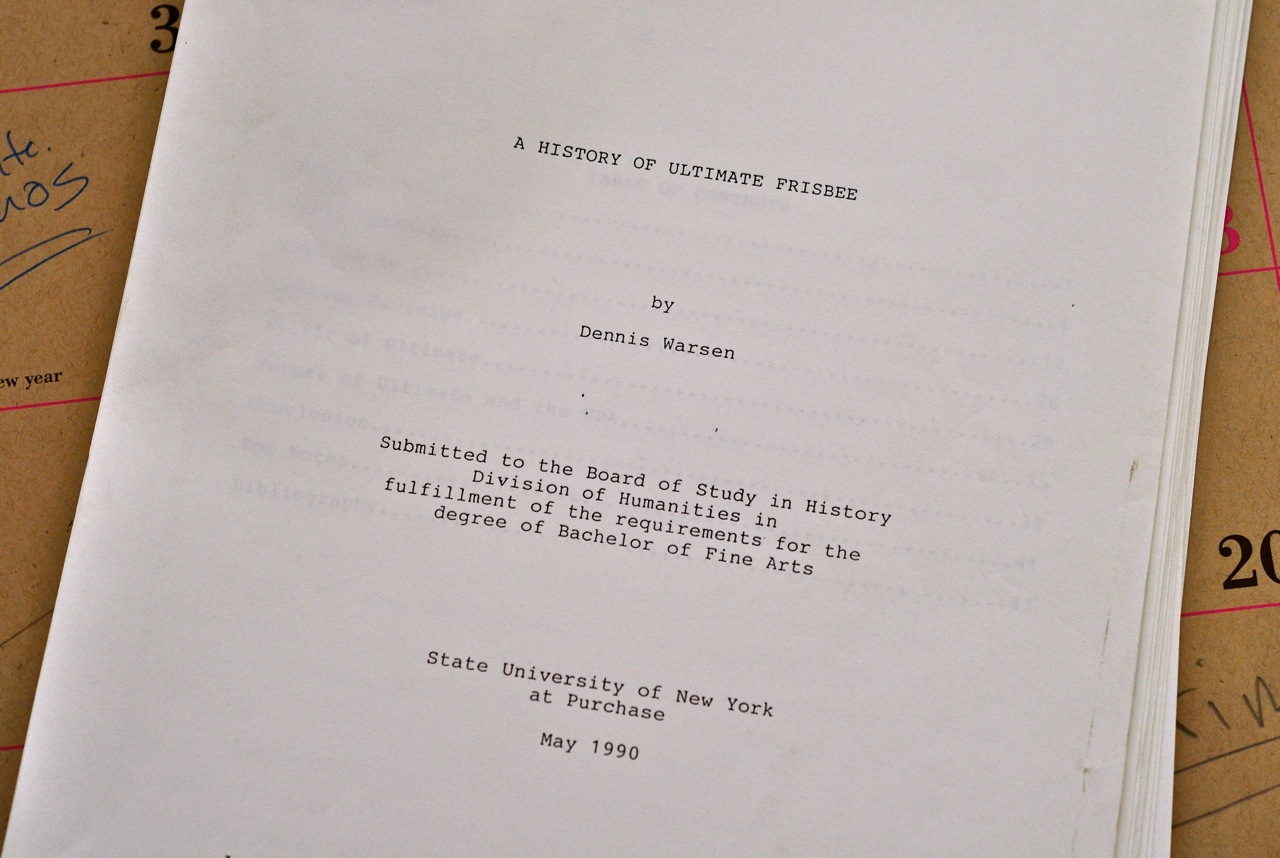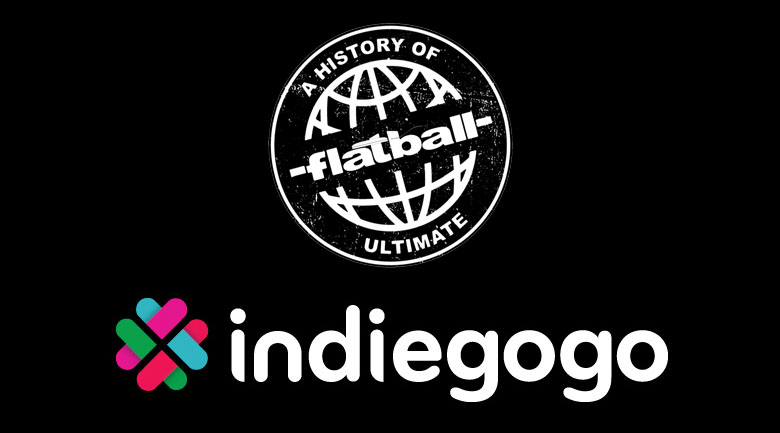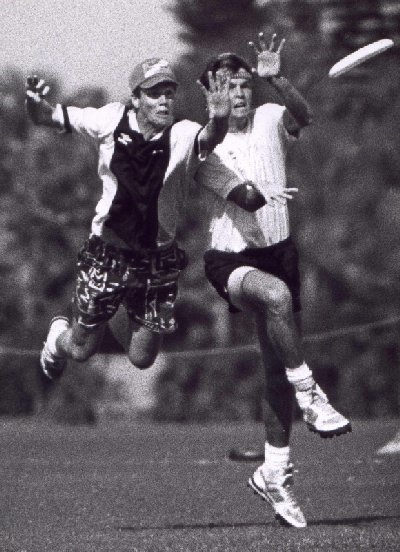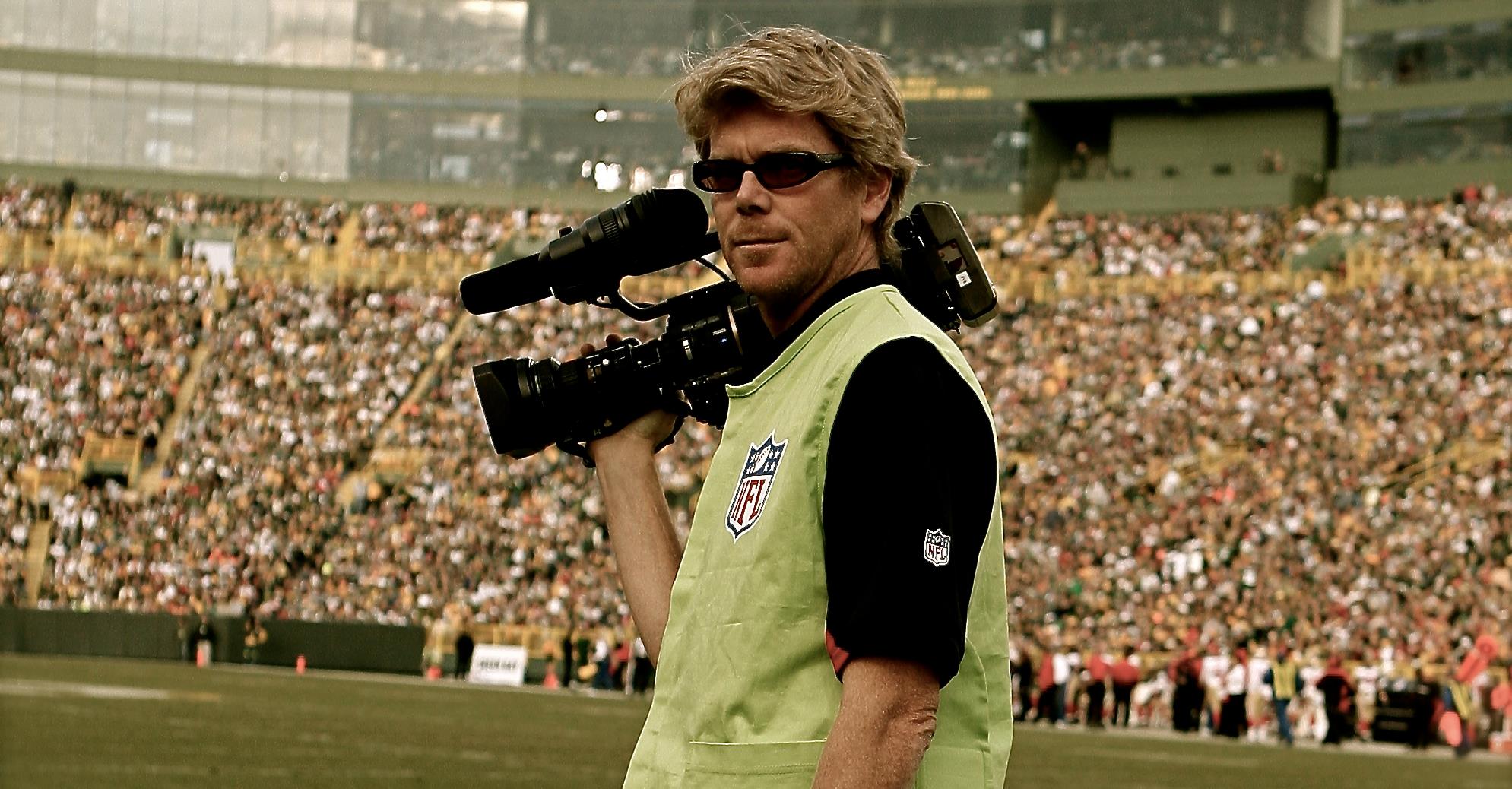“If we keep their offense on the field, they’re gonna die!”
“FACT!”
“They have seven guys on their offense!”
“FACT!”
“We have 20 guys on our D!”
“FACT!”
“There’s no way they can run with us!”
“FACT!”
“They can’t run with us now!”
“FACT!”
“They can’t run with us next point (FACT!), and the next point (FACT!), and the next point (FAAAAAAAACT!)”
I’m sitting in Dennis Warsen’s Emeryville, California apartment, watching footage of the greatest huddle ever from a rough cut of a documentary that could put ultimate on the map.
“That cheer is incredible,” I say, wide-eyed with amazement. “Who is that? Where were you guys?”
Warsen grins, nostalgia washing over him. “Pat King. That was at the finals of Worlds in Toronto in ’91 against Boston. Completely improvised”.
The team is the legendary New York, New York, a dynasty with six national championships and five world championships to their name, and this is Warsen’s team. Not just his, of course; New York, New York was packed with superstars of the late 80s and early 90s. He’s now forwarding excitedly through the scenes, pausing occasionally to point out a player I should know. “Kenny Dobyns”. “Dave Blau.” “Skip Kuhn.” “Jon Gewirtz.” I’m astounded. These names are the stuff of legends to me, and I’m watching them being brought to life on Warsen’s laptop in hours and hours of never before seen footage.
A week previous, Warsen had messaged me on Facebook. “Heard you’re in town. I could use some help on Flatball.”
I was intrigued. I had vaguely been following his progress on an ultimate documentary since we had met at Worlds in Japan in 2012, but had never given it much more than a passing glance. Since I was around, I agreed to watch a rough cut of the film and give him some feedback. What I found was a goldmine of uncovered footage, classic and contemporary interviews, and a director’s vision of bringing the story and culture of ultimate to a mainstream audience.
Warsen discovered ultimate by chance in the spring of 1986 while walking home from basketball practice at SUNY-Purchase, where he was a walk-on small forward. “The first point I ever played, I was playing barefoot. I made a cut downfield and my guy hucked it way out in front of me. I ran it down and fully laid out for it, but I dropped it. I was pissed off cause I could have caught it, and yet everyone was cheering for me, which I didn’t understand. I told them, ‘but I dropped it?’ They were blown away by the bid, I guess. So eventually I bought some cleats.” Warsen recounts.
He was immediately hooked. At 6’4″, he towered over most of his opponents, but he wasn’t a typical string bean deep receiver. Extremely coordinated and quick for his height, he put on shows with chest high layouts and wrap-around Ds. “People talk about Beau and Brodie… I like to think I was a combination of both,” Warsen laughs. In the summer after his sophomore year of college, his stature stuck out enough to attract the eyes of the legendary New York, New York team, who were looking for a deep defender that could guard the likes of Boston’s Steve Mooney (6’7″) and Jeremy Seeger (6’4″).
With only a year of ultimate experience under his belt, some on the team had reason to be skeptical of the 20-year old , but alongside stars Pat King and Kenny Dobyns, “Cribber” (Warsen’s ultimate nickname, coined after his unmatched ability to “crib”, or take naps anywhere and everywhere when not on the field) quickly became a crucial factor in New York, New York’s unprecedented six national and five world championships. After the New York dynasty ended, he moved to California, where he played with Double Happiness and Jam, leading them to finals appearances at nationals and worlds, respectively. In 1999, he made a lifelong interest in photography official by enrolling at the Academy of Art San Francisco to study film production, and a bit of bad luck gave him the chance to test his chops at World Ultimate Club Championships in St. Andrews, Scotland the same year. Slated to play for the Condors, he had broken his arm in the months leading up to the tournament, but with his ticket booked and not content with aimlessly wandering the fields, he brought along a videocamera and started interviewing players and teams, footage that would later be invaluable for the documentary.

Warsen’s college senior thesis, A History of Ultimate Frisbee, started a lifelong interest in documenting the sport.
After a 2002 retirement from ultimate, Warsen began to focus on a career in sports photojournalism. He worked for the Oakland Raiders and Athletics, and eventually was hired as a Director of Photography for the NFL’s San Francisco 49ers Total Access show, for which he won an Emmy in 2009. He continued with the 49ers until 2012, when something told him it was time to make Flatball a reality: “I had been harboring the idea for a look into ultimate’s past all the way back to my senior year of college. My senior thesis was actually called A History of Ultimate Frisbee.” In 2012, a trip to the South by Southwest Film Festival in Austin provided further enlightenment: Warsen had the chance to watch all sorts of documentaries, including Marley, a Bob Marley biopic. With the footage he had taken a decade earlier in the front of his mind, Cribber decided that it was time to take the plunge.
Securing initial funding from friends and family, Warsen made the journey to Boulder for the USA Ultimate College Championships in 2012 to interview players and administrators. “I got some great footage, and when I got home, I knew it was definitely happening”, he recalls. He got to work creating a Facebook page, website, and adorning the project with a name: “Flatball”, a word New York, New York teammate Pat King used to employ instead of “ultimate”. Drawing on a multitude of connections from a 13-year playing career, he planned a series of interviews all over the world, booking a ticket to Japan for the World Ultimate and Guts Championships and sending a camera to Israel to get footage of Ultimate Peace.
“When you’re going into any filmmaking process, you don’t know what the story is until it presents itself,” Warsen explains. Drawing on Dogtown and Z-Boys, he was inspired to find a cast of characters to tie the documentary together, and the solution was obvious: his former New York, New York teammates. What better centerpiece to tie a documentary together than the colorful characters of a storied ultimate team that spanned the “hippie” and modern generations? After the NYNY interviews were confirmed, the rest of the characters fell into place. Warsen recounts, “I knew it had to be the Japanese women’s team, it had to be NexGen, Ultimate Peace, the professional leagues, Revolver, the three international powerhouses: Sweden, Japan, and Great Britain, and then New York, New York to tie it all together.”
Besides an ensemble cast of characters, Flatball explores themes and struggles that have become entangled in the sport’s development. “I always knew I wanted to play with the conflict between the Spirit of the Game and the legitimization of the sport,” says Warsen. To this end, he uses his own former team as an example. New York, New York was vilified for their intense and physical play, especially by the more free-spirited teams of the late 70s and early 80s. The debates continues to this day, as Flatball shows with interviews and footage of the nascent professional leagues, which use referees instead of self-officiation, and don’t have spirit of the game written into their rules.
In 2013, Warsen was honored with a USA Ultimate Hall of Fame induction, joining many of his interviewees and giving him further drive to complete the film. He spent the rest of the year collecting thousands of hours of footage — both self-shot, and from the archives of collectors all around the world — to provide the base for the film. Flatball is the first documentary to take a holistic look at ultimate, and as such is uniquely positioned to bring ultimate to a mainstream audience for the first time. Cribber hopes that Flatball will do for ultimate what films like Endless Summer and Step Into Liquid did for surfing: “The most successful documentary films inform and enlighten people on a subject they don’t know much about, and they’re even better if that subject has some redeeming qualities that make it even more compelling.” With spirit of the game, a close-knit, but growing community, and fascinating characters, Warsen thinks Flatball is the perfect vessel to showcase the sport to a broader audience. But a major documentary release is too big an undertaking for one person to complete without help, even someone who works as tirelessly as Warsen.
The next step will be to secure a round of funding from the community. “Flatball has been my passion project for the last two years, and now I want to involve the entire ultimate community in supporting and promoting the film”. Warsen says. Today, he’s launching a crowdfunding campaign asking for funds to hire an editor, narrator and graphic designer, license music and archival footage, and provide resources for marketing and distribution, all vital elements to completing and releasing Flatball. In a sports world plagued by doping scandals, match fixing, showboating, and violence, Warsen contends that every dollar donated to help with the marketing of the film will help bring ultimate’s values to kids and parents who otherwise wouldn’t have known about it: “I think it’s important that if ultimate players think that they have gotten something out of this game — if they’ve become better people — which I think we all do, then the film is worthy of support.”
Fans can donate via the film’s Indiegogo campaign, which launched this morning and will run through April 10. Click on the banner below to donate:

Feature photo of the New York, New York boys dressed in their Sunday best is courtesy of Stacy Cochran.







Comments Policy: At Skyd, we value all legitimate contributions to the discussion of ultimate. However, please ensure your input is respectful. Hateful, slanderous, or disrespectful comments will be deleted. For grammatical, factual, and typographic errors, instead of leaving a comment, please e-mail our editors directly at editors [at] skydmagazine.com.